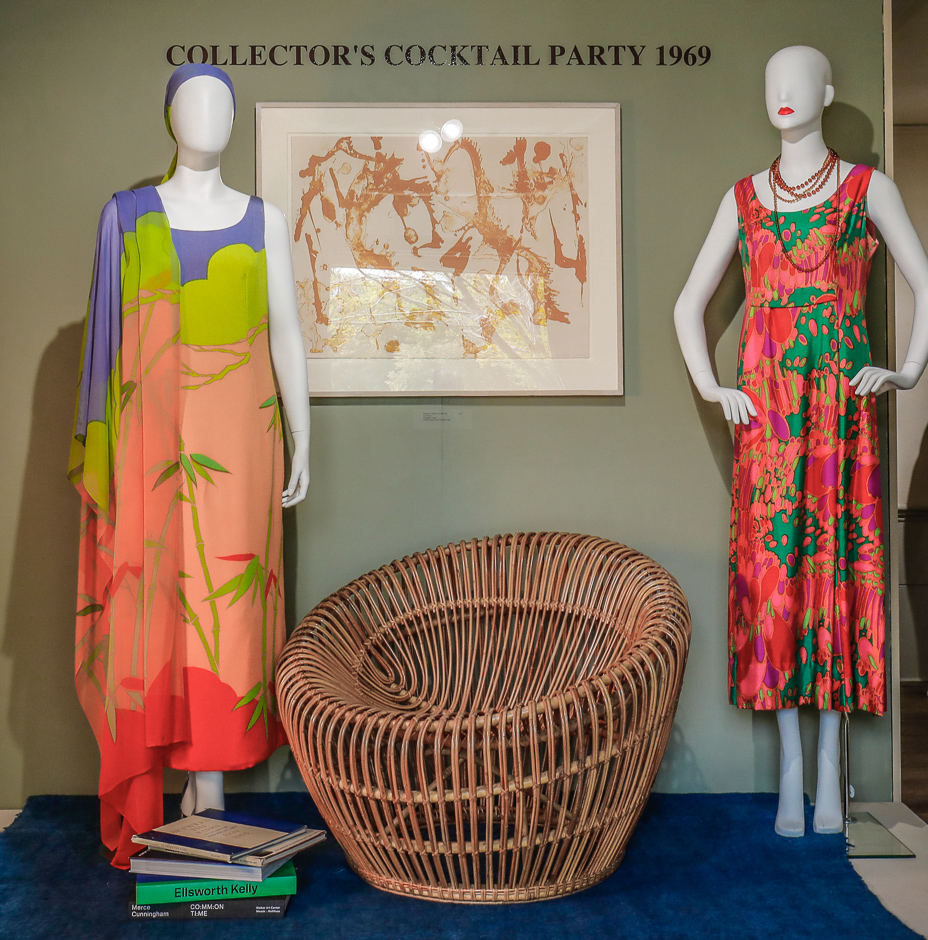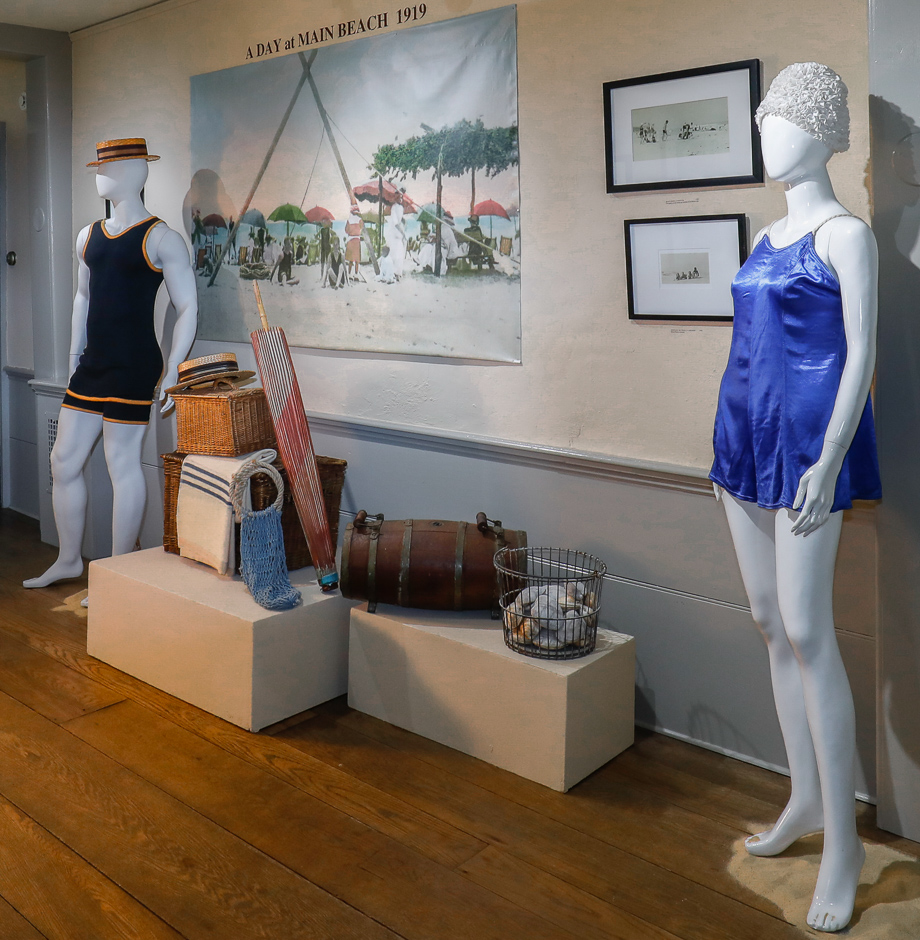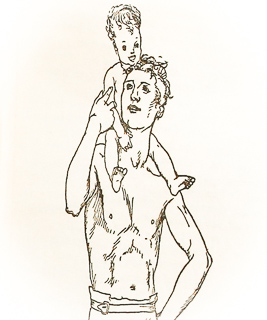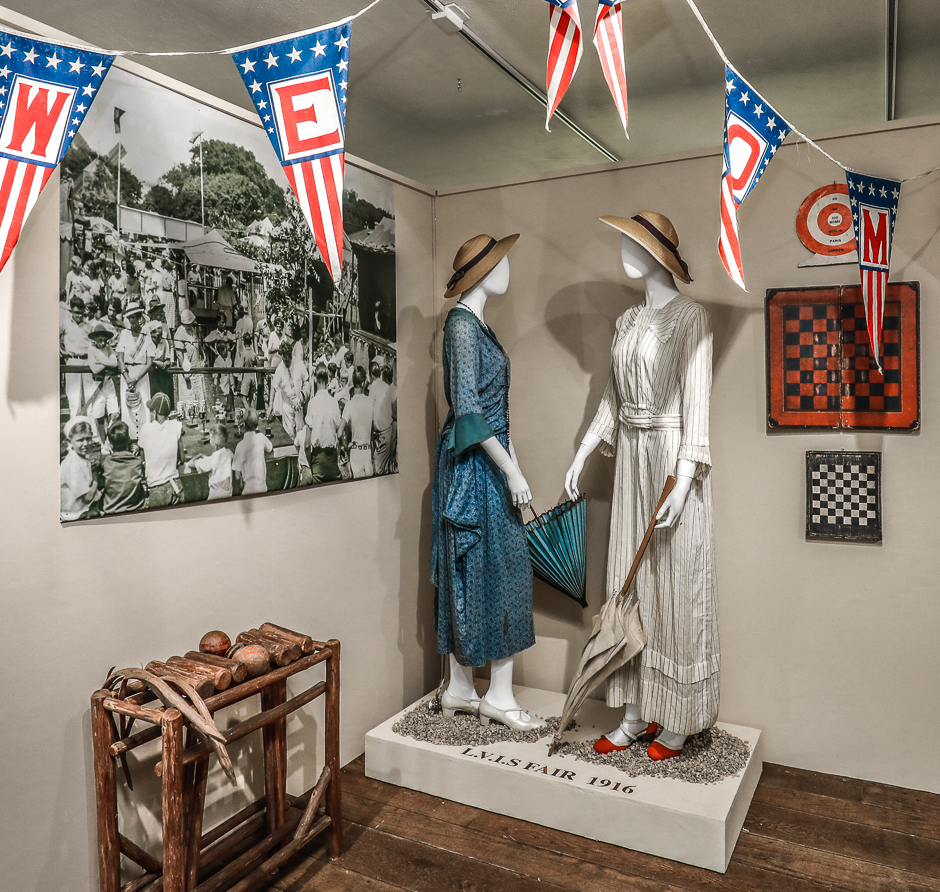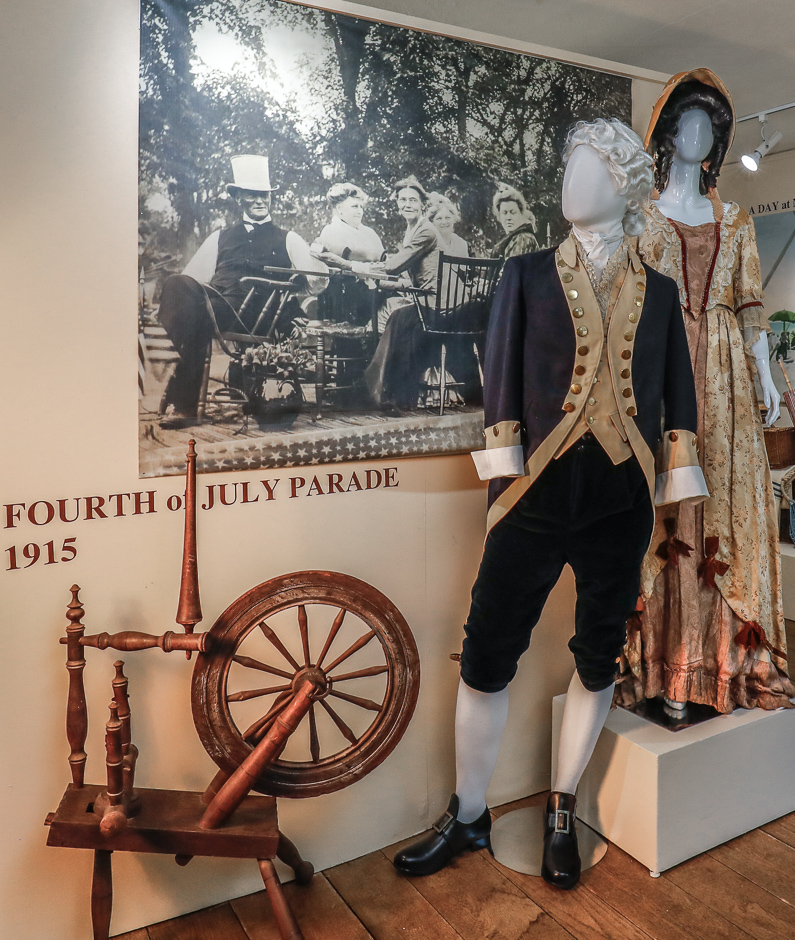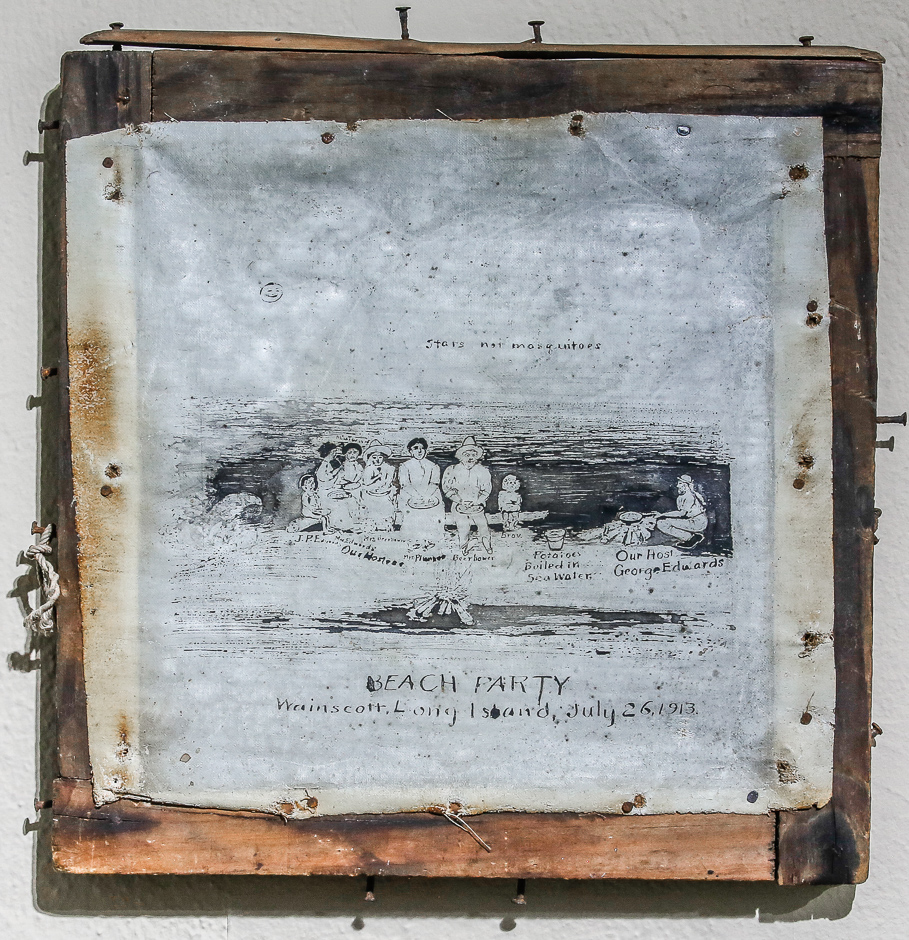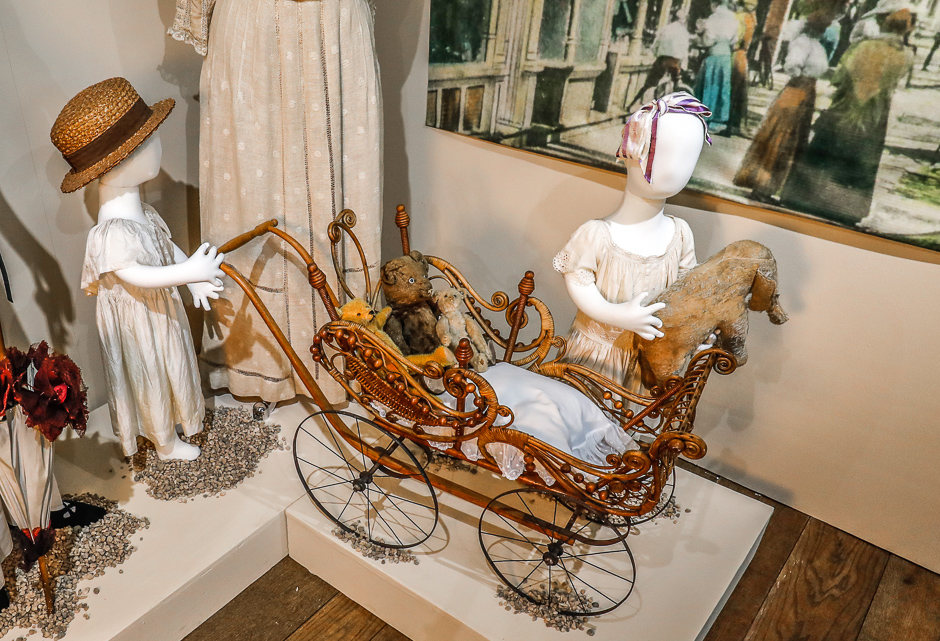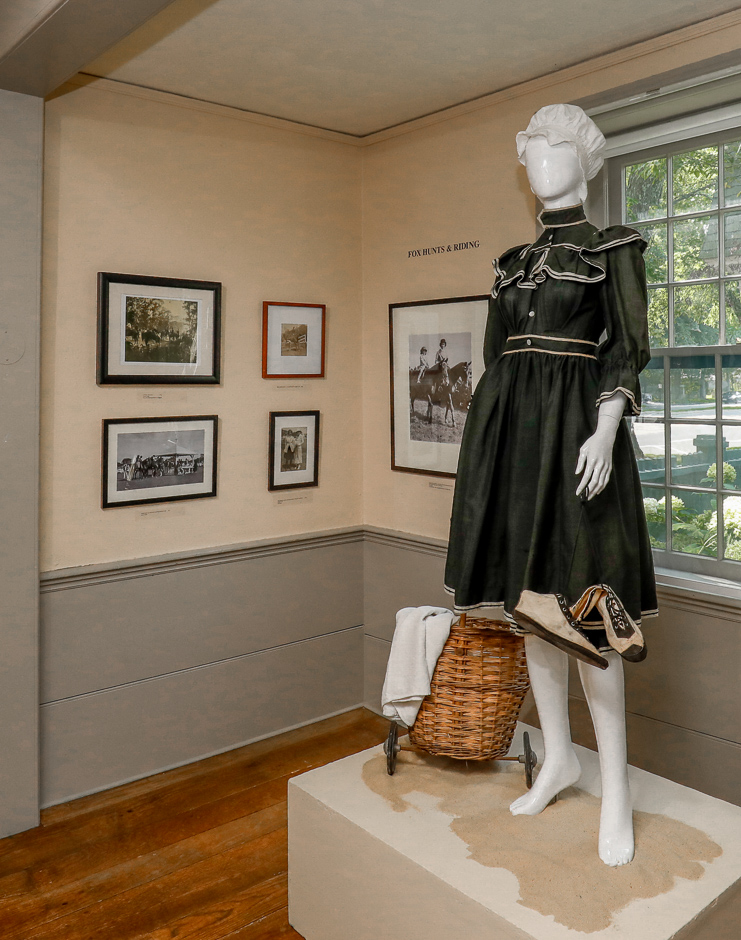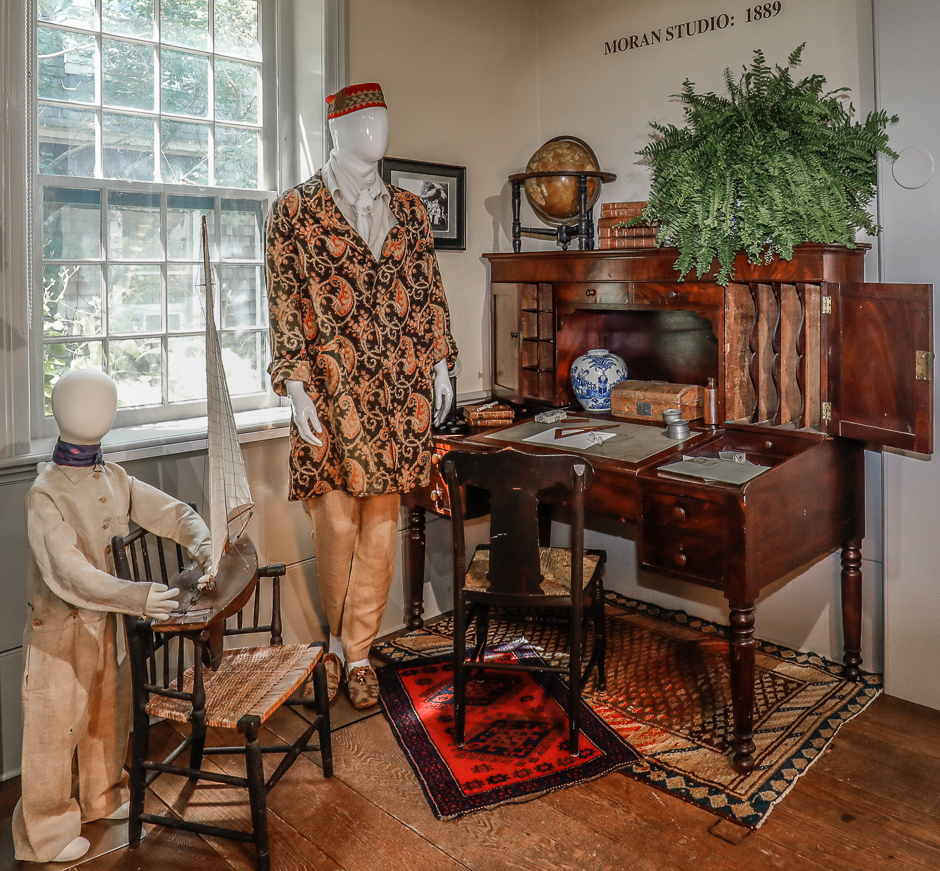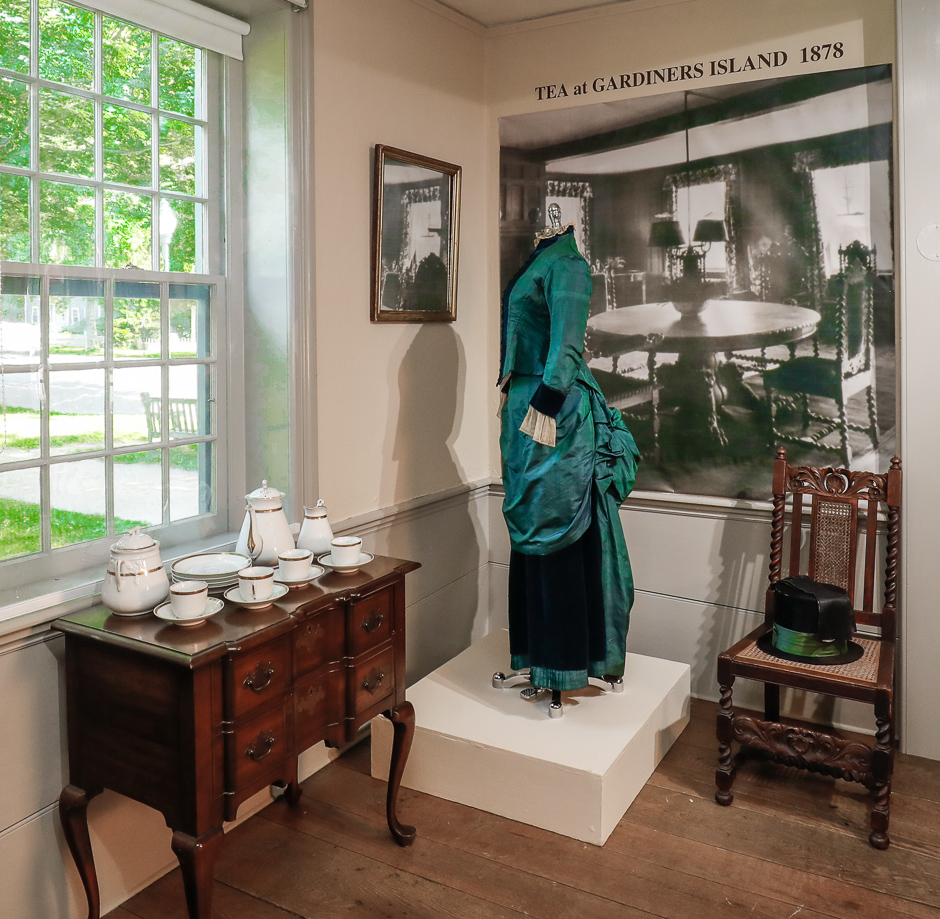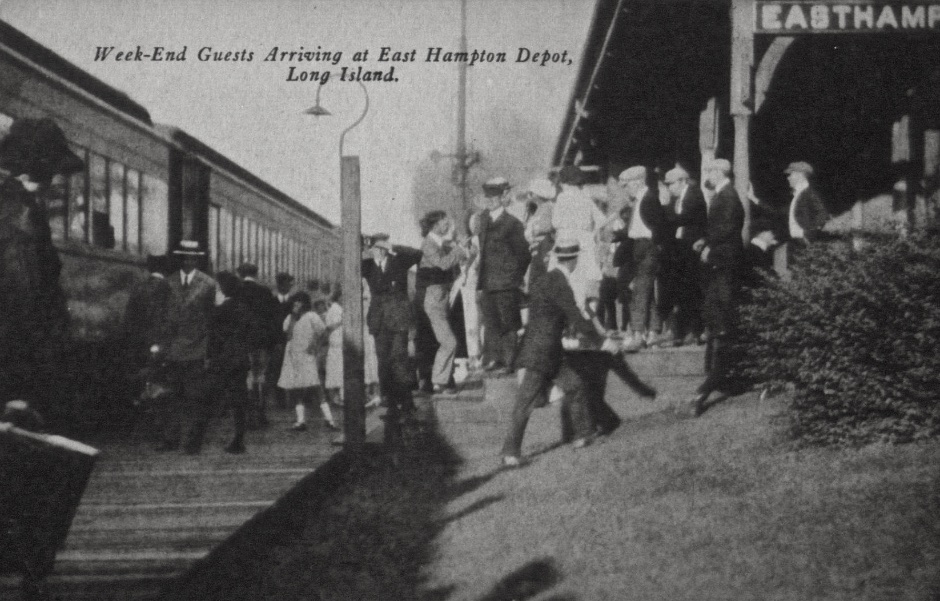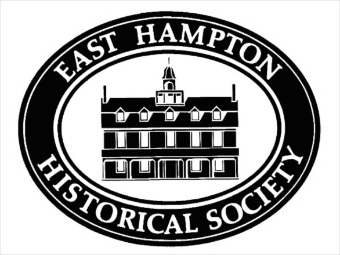
YOU’RE INVITED:
150 Years of Parties & Picnics in East Hampton
Exhibit at the Clinton Academy Closed 10.7.18
`~~~~~~~~~~~~~~~~~~~~~~~~~~~~~~~~~~~~~~~~~

YOU’RE INVITED: 150 Years of Parties & Picnics in East Hamptonexplores the celebratory exploits of our East End hamlet, from Main Street Promenades, simple date nights at the cinema, to family weekends at the beach – the fabled summer happenings of East Hampton are brought to life through a rare collection of fashionably curated vignettes of costumes, and never before seen objects, including amazing textiles, and images of a partiful past.
“The inspiration for the exhibition,” said Chief Curator Richard Barons, “was that the East Hampton Historical Society is in possession of an extensive collection of period garments, but has never had an exhibit that focuses on our vast costume holdings; we sought to rectify this omission with a summer exhibition.”
“Sunlight has a tonic effect on the skin, restoring vigor and resistance to infection, but in addition to this it has another important property. The value of vitamin D in the diet has been repeatedly mentioned. In the ordinary way we can only get vitamin D by eating foods which contain it, but when we are out in the sunshine we can actually make vitamin D in our own bodies. Sunlight is composed of various rays, and, of these, the ultra-violet rays penetrate the surface layers of the skin and act upon a substance called ergosterol which lies in the fat beneath the dermis. Under the influence of ultra-violet light this substance is converted into vitamin D. This property of sunlight has a direct effect in curing rickets and improving growth and nutrition.” — The Hygiene of the Body / Care of the Skin.
Artist unknown, pen and ink on oil cloth. This folk art drawing documents George Edwards’ summer picnic. Private Collection.
The Moran Studio was the first artist’s studio built in East Hampton, and it played a significant role in American art history. In its heyday The Studio was a lively center of the turn-of-the-19th-century art colony.
~~~~~~~~~~~~~~~~ CURATOR’S STATEMENT ~~~~~~~~~~~~~~~~
Celebration has wide implications, from town wide commemorative pageants to simply having a good time. In East Hampton Town we certainly run the gamut. This community has been celebrating since our founding in 1648. As a Puritan town, our first public gatherings were often of a religious nature. We were thankful, in a pious way, for all our blessings.
By the 18th century festivals of thanksgiving and the often rowdiness of New Year’s Day, were common. Church holidays, like Christmas, became almost universal by the mid-19thcentury. Birthdays, weddings, harvest parties, clambakes, successful shore whaling triumphs and even traveling carnivals, further loosened the old conservative ways of the past.
This exhibition looks at how we have celebrated vast public parades, simple date nights at the cinema and family weekends at the beach. Through posters, invitations, lunch baskets, old pictures from heirloom albums and the clothes that so often signify “dressing-up,” we have aimed to explore a hundred-plus years of celebrating in East Hampton. We are delighted that you can spend a little time with these vignettes of our history, before running-off to tonight’s party. Cheers!
— Richard Barons
~~~~~~~~~~~~~~~~~~~~~~~~~~~~~~~~
EAST HAMPTON HISTORICAL SOCIETY
www.easthamptonhistory.org
—————————
Photos © Jeff Heatley.
————————- ADDENDA ————————-
Thomas Moran carted this bath house to East Hampton’s Main Beach each summer and brought it back to his home on Main Street each fall for winter storage. In the 1880s and 1890s women wore their regular dresses on the beach and men even wore jackets and ties when they were relaxing under a shade structure or walking or sitting on the sand. When it was time for a swim they changed into bathing attire in their bath house. Then right after swimming it was back to the bathhouse to immediately return to their regular street outfit.
The cluster of bath houses at Main Beach during the 1880s is documented by paintings of the era including the c. 1875-1880 painting Beach at East Hampton by John Ferguson and the painting East Hampton Beach, 1881 by Edward Lamson Henry (see Ronald G. Pisano, Long Island Landscape Painting, 1820-1920, (New York: Little, Brown and Co., 1985),pages 57 and 61). Thomas Moran, Mary Nimmo Moran and their three children used the bath house to change into their beach attire. The bath house is not only valuable as a tangible piece of the Moran family’s summer recreation, it is also the only known intact East Hampton bath house remaining of that early period.
— Robert Hefner /AAQ Preservation Portfolio — Moran Bath House, Restoration
————————————————
Harvey Ginsberg Collection of Archival Postcards. Courtesy of the East Hampton Library’s Long Island Collection.
_________________________________________________

